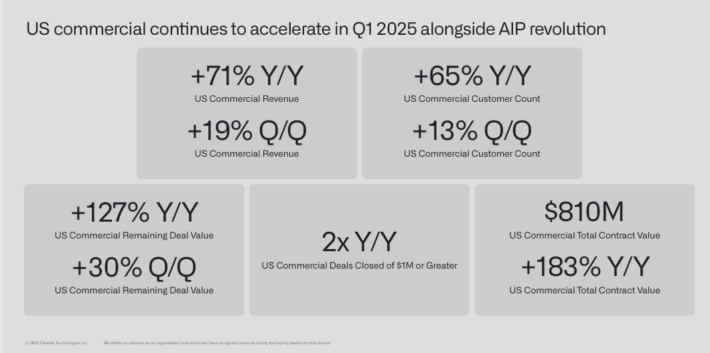Updated on November 4th, 2022 by Bob Ciura
Over the past decade, many technology stocks such as Apple, Inc. (AAPL), Cisco Systems (CSCO), and more have initiated dividend payments to shareholders.
While the technology industry has widely embraced dividends, not all tech companies pay dividends. One lingering holdout to paying dividends to shareholders is e-commerce giant Amazon.com Inc. (AMZN).
Rather than return cash to shareholders, Amazon continues to plow its cash flow back into the business.
The decision whether or not a company should pay a dividend depends on many factors. Thousands of stocks pay dividends to shareholders, and an elite few have maintained long histories of raising their dividends every year.
For example, the Dividend Aristocrats are a group of 65 stocks in the S&P 500 that have raised their dividends for 25+ years in a row.
You can download an Excel spreadsheet of all 65 Dividend Aristocrats (with important financial metrics such as price-to-earnings ratios and dividend yields) by clicking the link below:
Amazon’s lack of a dividend certainly has not hurt investors to this point, as Amazon has been a premier growth stock.
Over the past 10 years, Amazon stock generated returns above 20% per year.
But for income investors, Amazon may not be an attractive option due to the lack of a dividend payment. This article will discuss the chances of Amazon ever paying a dividend.
Business Overview
Amazon is an online retailer that operates a massive e-commerce platform where consumers can buy virtually anything with their computers or smartphones.
Amazon is a large-cap stock with a market cap above $900 billion. It operates through the following segments:
- North America
- International
- Amazon Web Services
The North America and International segments include the global retail platform of consumer products through the company’s websites.
The Amazon Web Services segment sells subscriptions for cloud computing and storage services to consumers, start-ups, enterprises, government agencies, and academic institutions.
Amazon’s e-commerce operations fueled its massive revenue growth over the past decade. Sales reached $469 billion in 2021, an amazing level of growth over the past decade.
Amazon reported impressive growth in 2021, as demand for e-commerce only continued to rise.
Source: Investor Presentation
Of course, Amazon’s huge revenue growth did not come easy (or cheaply). Amazon had to spend huge amounts of money to build its retail operation. As a result, Amazon had razor-thin profit margins for many years of its growth phase.
Related: Which is the better investment, dividend stocks or growth stocks?
In the 2022 third quarter, revenue of $127.1 billion rose by 15% while adjusted EPS of $0.28 beat estimates by $0.07 per share. By segment, sales in North America increased 20%, while international sales increased 12% excluding foreign exchange. AWS sales increased 27% year-over-year.
For the fourth quarter, Amazon expects sales between $140 billion and $148 billion, which would grow 2%-8% from the 2021 fourth quarter.
While the retail business still operates at low gross margins, it continues to generate strong revenue growth. Separately, the AWS segment is highly profitable, and is largely the reason for Amazon’s impressive earnings growth. Such strong earnings growth improves Amazon’s chances of paying a dividend at some point in the future.
That said, the company still plans to invest heavily in growth, which makes for uneven earnings-per-share from one quarter to the next.
Growth Prospects
As is typical with many technology companies, growth investment is Amazon’s top strategic priority. This is partly out of necessity. Things move extremely fast in technology, a highly competitive and cyclical industry. Technology firms need to invest large amounts to stay ahead of the pack.
Amazon is no different—it is making major investments to continue building its online retail platform. Amazon continues to grow its retail business. It also acquired natural and organic grocer Whole Foods for nearly $14 billion. This gave Amazon the brick-and-mortar footprint it desired to further expand its reach in groceries.
Amazon isn’t stopping there. In addition to the retail industry, it aims to spread its tentacles into other industries as well, including media and healthcare. Amazon has built a sizable media platform in which it distributes content to its Amazon Prime members.
Making original content is another highly capital-intensive endeavor, which will require huge sums in order for Amazon to compete with the likes of streaming giants Netflix (NFLX) and Hulu, as well as other television and movie studios.
Now that Amazon dominates retail and media content, it is readying a potential move into the healthcare industry. In 2018, Amazon acquired online pharmacy PillPack for $753 million.
More recently, in 2022 Amazon announced the acquisition of One Medical in a $3.9 billion all-cash transaction, including One Medical’s debt. One Medical is a national primary care company.
At the same time, Amazon continues to build its presence in robotics, particularly in household products. Amazon recently announced the $1.7 billion all-cash acquisition of iRobot (IRBT), which makes the Roomba and other products.
These investments will fuel Amazon’s revenue growth, which is what the company’s investors are primarily concerned with. Nevertheless, such aggressive spending will limit Amazon’s ability to pay dividends to shareholders, at least for some time.
An added challenge to Amazon’s earnings-per-share growth is the recent rise in costs across its business. In the 2022 fourth quarter, operating income is expected to be between $0 and $4 billion, compared with $3.5 billion in the fourth quarter of 2021.
Will Amazon Ever Pay A Dividend?
Amazon has joined the ranks of profitable tech companies like Apple and Cisco, which generate high earnings-per-share. In this way, Amazon has climbed ahead of other similar tech stocks like Netflix (NFLX), which still does not pay a dividend (and might never) due to a lack of consistent profits.
Amazon’s earnings-per-share were $3.24 (split-adjusted) in 2021, which means the company has reached a new level of profitability. However, Amazon still has a way to go before anyone should realistically expect it to begin paying dividends.
In theory, Amazon could pay a dividend if it chose to, as the company is highly profitable.
The company can use its profits for a number of purposes, including debt repayment, reinvestment in future growth initiatives, paying dividends, or share buybacks.
If Amazon chose to, it could distribute a dividend to shareholders, although any announced dividend payout would likely be small, in terms of the dividend yield.
For example, even if Amazon maintained a dividend payout ratio of 50% (which is highly unlikely for a growth-oriented tech company), the dividend of $1.62 per share would represent a 1.8% yield.
And, Amazon’s earnings and free cash flow are under significant pressure from rising costs, making it very unlikely Amazon will declare a dividend in the near term.
Final Thoughts
There is no debating the fact that Amazon has been one of the most impressive growth companies in history. From its humble beginnings as an online book seller, Amazon now dominates the online retail industry. It is also a massive cloud services provider, as well as a movie studio and content streaming giant.
Ultimately, a company has to make the decision to initiate a dividend payment. This is often done when future growth no longer requires such heavy investment. For Amazon, the company still has many new avenues for future expansion in mind, including (but not limited to) media content, grocery stores, and health care.
Growth is still very much the top priority for Amazon. As a result, investors should not expect a dividend payment any time soon.
See the articles below for analysis on other stocks that currently don’t pay dividends and whether they might.
- Will JD.com Ever Pay A Dividend?
- Will Shopify Ever Pay A Dividend?
- Will PayPal Ever Pay A Dividend?
- Will Pinduoduo Ever Pay A Dividend?
- Will Adobe Ever Pay A Dividend?
At Sure Dividend, we often advocate for investing in companies with a high probability of increasing their dividends each and every year.
If that strategy appeals to you, it may be useful to browse through the following databases of dividend growth stocks:
Thanks for reading this article. Please send any feedback, corrections, or questions to [email protected].















